-
Posts
1,858 -
Joined
-
Last visited
Posts posted by Pete Dunk
-
-
Wakker Phoenix anglos are traditionally made concertinas which use reed sets recovered from vintage Wheatstone or Lachenal instruments that were beyond economical repair. What you get is a craftsman built new concertina with an ancient heart, this sets them well apart from the Rochelle!
Edited because the Phoenix is a Wakker instrument not a Geuns-Wakker as I thought. Oh and I misspelled Geuns too!
-
At least, I can go octaves down on my MIDI anglo, but it's not the same thing, really.
Intriguing; I keep looking at the Wakker midi English and wondering how accurately they will respond to the bellows pressure for expression. Is your anglo a Wakker Chris?
I quite fancy plugging a concertina controller into the Roland and selecting bandoneon which is one of it's really effective voices, it would be interesting to hear what the concertina voice is like too because it's one of the poorer patches using a keyboard or guitar controller.
-
Hello and welcome to the forum, I have to say a little more info is needed before proper advice can be given. The style of music you want to play, whether you've heard a player you like and want that kind of sound, even the kind of accordion you play now. All of this matters because there are three main types of concertina (English, Anglo and Duet) that are played very differently, within those three types there are two types (Anglo and Duet) that have a variety of button layouts each of which have their supporters (and detractors!).
Budget priced English and Anglo instruments that are very playable are available, Duets are expensive from the off.
Check out the Rochelle Anglo and the Jack and Jackie English from Concertina Connection.
-
Lets not forget Dave Elliott
-
I made a small box to allow me to work on the action/reed board without the risk of damage to the components on the other side. I've taken the opportunity to take a few pics of the Jackie's innards including close ups of the action.
The box also provides a safe stand to open the concertina
The action board sits in allowing access to one side or the other without fear of damage
The action board
The reeds
-
I'm left handed and generally the left hand is very dominant, yet I use a knife and fork right handed and also play the guitar right handed. I finger pick so both hands stay pretty busy. I keep looking at melodeons and quite fancy having a go but I'm not sure I would get on with playing melody with the right hand; never worried me with keyboards but this seems different somehow.
-
A fairly cheap footpump of the type used to inflate airbeds would do the trick, the smallest size of the adapter nozzles would give quite a powerful blast of air.

-
My second problem happened last week, a sticking key on the Jack. It popped back out when I gave it a tap so it wasn’t a broken spring. I played on for a few minutes and it stuck again, after that it was sticking more often than not. I took the end off for a look around but there was nothing obvious, the only thing that seemed odd about the key setup was the spring position relative to the lever pivot. Most of the springs were positioned with the coil more or less level with the rivet but this one was set nearer the pad end of the lever and was under more tension at rest than the others. Could this have something to do with it?
I didn’t want to interfere with the spring unless I was forced to and it was in the back of my mind that the key was somehow fouling in the hole through the end, perhaps something had moved, the key certainly looked slightly tilted to one side compared to the rest as if the guide hole in the action board wasn’t quite in line with end. With this in mind I decide that the tiniest smear of liquid soap around the body of the button wouldn’t do any harm and might prove the point if not cure the problem. It made not the slightest bit of difference.
With the end back on I paid close attention to the key height and it seemed to me that perhaps the key in question went in a fraction further when pressed; could it be going in too far and catching the edge of the hole at the back? Perhaps the bushing under the key had become compressed from me being too heavy handed. With no spare bushes to hand I used a paper punch on some stiff card and drilled a hole in the resulting 5mm disc to make a packing piece to go behind the existing bush. I was quite pleased with my ingenuity but sadly that didn’t make any difference either so I was on the wrong track again.
There was no point leaving the packing piece in there so the end came off again; I was feeling pretty low by now. I took the key out and was in the middle of removing the card disc when I noticed that the lever was horizontal and the pad well up from the board – the pivot was sticking! Several operations of the lever without the button in place proved the point. I grabbed a bit of kitchen towel and twisted one corner to a point, nipped out to the garage and sprayed a tiny amount of WD40 onto the tip; I rubbed the barely damp paper around the pivot and the problem was solved.
I wouldn’t normally put WD40 anywhere near wood but it was such a tiny amount that was applied directly to the steel pivot that I can’t see it affecting anything. I’m not sure why the problem developed, perhaps there was a little rust caused by poor storage conditions somewhere as it travelled around the world but if that’s the case why did it show up after several weeks of being played? Anyway it’s alright now which is the main thing.
Edited to add:
The use of WD40 penetrating oil wasn't a good one, I was lucky to get away with it and would never do that again. If you have seized mechanical parts buy a small bottle of graphite powder from a locksmith or good hardware shop. To get it into tight places mix a small amount with a drop of meths and apply with an artist's paint brush, the meths will carry the graphite into the joint and then evaporate leaving the dry lubricant in place.

-
-
Here’s a new thread dedicated to the troubleshooting, repair and tweaking of the Jack/Jackie/Rochelle/Elise series of concertinas from Concertina Connection. I hope others will make contributions for the benefit of the many owners of these fine starter concertinas.
The first problem I encountered was reeds that were slow to speak. Rather than return the concertina to The Music Room I sought the advice of Concertina Connection via email and received a helpful reply from Wim Wakker a couple of days later. No instructions were given for opening up the concertina so I’ll describe that now for those with no past experience. First of all use a methodical approach, keep things laid out in order and the same way up to avoid confusion when putting it back together, there’s not a lot to dismantle so there shouldn’t be a problem. There are only five main sections to this type of concertina – the bellows, two action/reed boards and two fretted ends.
Before you start make a list of the notes you need to work on and whether the problem is with push, pull or both. I put a thick towel on the kitchen table to protect the instrument and prevent it from skidding about and put the concertina on end with the top (thumb straps) away from me. Six screws fix the end onto the concertina, these are wood screws that screw into the timber of the bellows frame rather than the more usual end-bolts that screw into brass inserts. The wood screws just nick the edge of the action board on the inside before going into the bellows frame. A no.2 Phillips screwdriver is needed here, don’t use a Pozidrive because they don’t fit properly and may damage the screw head. If you don’t know the difference between the two or think it doesn’t matter, stop now, send the concertina to a repairman and buy a tin whistle to keep you amused while it’s away.

Slacken the six screws, there’s no need to remove them completely, just spin them with your fingers until there’s no resistance then carefully lift the end from the concertina and set it aside. This way all of the screws remain in the same position, it may be a little over cautious but that’s the way I like to work. You are now faced with the action board, a thin piece of plywood with a piece of MDF glued to it. The levers and buttons are mounted on the MDF. What you can’t see at this stage is that the reed banks are mounted on the back of this board projecting down into the bellows. Carefully lift the action board straight up away from the bellows, because I’m me I pencilled a small arrow on the top of the action board and a similar mark inside the bellows frame to avoid silly mistakes when reassembling. The first thing you’ll notice is that the buttons are much harder to identify now that the end has gone and they’ve flopped all over the place! If only I’d thought to write ‘2nd row third from left’ instead of ‘A’! The following paragraph is a direct quote from the email.
Locate the aluminium plate that corresponds with the button. You’ll see a steel reed and a foil valve on each plate. The visible steel reed is for ‘push’, and the reed underneath the valve is for ‘pull’.You can adjust the gap at the tip of the reed a little to prevent it from choking. If the problem is with the ‘push’ reed, pull the tip of the visible reed up a little (ca. 0.5mm) if it is a ‘pull’ reed push the tip (with a small screwdriver) of the reed behind the valve down a little. Repeat until corrected.
The points I would add to this are:
Be careful lifting the ‘foil’ valves, it’s a plastic foil and looks as if it may kink easily, lift it, don’t fold it back!
The reeds are spring steel and require a little more force than you may think to adjust. Move the reed tip gently and examine the position, if there’s no visible difference repeat using slightly more force and check it again. When you are satisfied that a slight adjustment has been made move on to the next reed, when they have all been adjusted reassemble the concertina and test it. Note any remaining problems and repeat the whole process until all is well.
Be patient!
Do not over-tighten the end-screws, I tighten them with my fingertips on the shank of the screwdriver rather than gripping the handle, no more than a quarter of a turn after all slack has been taken up. Tighten the screws sequentially in diagonal opposites, rather like cylinder head bolts.
My final point is that I’m no expert at this and will be happy if someone with more experience steps in to correct any mistakes I’ve made.

edited to include the recently released Elise Hayden Duet to the top of the post (cheers ragtimer!)
-
One of the issues affecting the bellows movement is that some of the notes on my Jackie are sticking, so it takes slightly longer to get the note to sound
I had similar problems with my Jack and Jackie 'tinas and the solution was fairly straightforward if fiddly and a bit nerve-wracking at first . The Jack also developed a sticking key which took time, patience and frustration before I figured out what the problem was; the cure was ridiculously simple.
Over the last few days I've considered starting a new thread in the Construction and Repair forum specifically for the Jack/Jackie/Rochelle concertinas recounting in detail my experiences along with a few relevant photos. There are quite a few posters here who play or have played these instruments and I hope they will add to the pool of knowledge, perhaps the pro makers/repairers will join in too with suggestions for tweaks and/or improvements so that practical owners can turbo-charge their instruments. Someone did this elsewhere for the Stagi so why not the Wakker models?
Past experience of doing a full setup on budget guitars and mandolins has proved to me that very ordinary and even poor instruments can become really quite good.
So far I haven't had time to write the inevitably long post to start this new thread but perhaps I'll get time over the long weekend especially as it looks as if the weather will be bad. Does anyone think this is a worthwhile idea?
-
Maybe you should've tried walking "from [t]here to Skipton, ten mile o' clarty lane" with it?

But would you see him face to face and thank him for his pain?


-
Another source of tunes in abc for conversion by the Tune-O-Tron Convert-A-Matic
-
I added The Londonderry Hornpipe to the Tune-O-Tron yesterday. I found a copy of the tune from one of the links earlier in this thread but found the chords off-putting as one of them overwrites the 3 below a triplet and the chord letters are printed below the stave rather than above which is odd. The music was in PDF format so I couldn't edit out the annoying bits so I wrote an abc file for it.
Quite a busy piece this one!
-
The Rochelle is not the most attractive instrument to listen to or to look at, but it gave me sufficient taste for the instrument that I placed an order for a far better one a few weeks later.
Does this mean you have a Rochelle that needs a good home?

-
Odd thing that. I tried an anglo years ago and couldn't get on with it but I'm so pleased with the Jack and Jackie that I'm tempted to give the Rochelle a go one of these days. I'm also becoming interested in melodeons, this is a very worrying turn of events.

-
The much acclaimed Jackie/Jack concertina, that carries the promice to the hundreds, if not thousands, would be concertina players, has short cuts. It lacks duplicate accidentals, taking away players choice, and sometimes making it difficult to finger chords. Is it a blessing (in form of price and availability) or a Curse (in form of price and availability)?
I reckon that any instrument that is playable enough to encourage a beginner rather than put them off because it's so hard to play should be allowed a few limitations. By the time the missing accidentals start to become an issue it's probably time to move up anyway, at which time you'll be pleasantly surprised at the money you get back on the used concertina and realise that you've had a lot of fun for very little money.
So I would say yes to your question. All you need to decide now is which one.


-
Next you'll be wanting to do a part-ex for my Ovation Balladeer with that beat up old 62 key Wheatstone MacCann you've been hawking about.

-
Hm, I may be wrong then.
Could well be. Have a listen to what one man with a large number of concertinas can do!
-
I'd be surprised if the Jack or Jackie were significantly quieter than the Rochelle. On an English the chords will shift from one hand to the other and you'll have to mix them in with the melody. Sounds like you would like a duet but even the Stagi Hayden isn't cheap to buy. You may find the 30 keys on a Jackie a bit limiting after a while but you can always trade up afterwards at Concertina Connections without losing any money; the same applies with a Rochelle of course.
Hello yourself and welcome to the forum.

-
Sorry folks, I made a typo in the second full bar which should end with dc instead of dd. I've altered the abc above and the version on the Tune-O-Tron.
Still different to the Spiers and Boden version though!
-
It's the same tune but they messed with it a bit.... (for the better I have to say!)
-
Actually, as I compose my posts (e.g., this one), spellchecking is taking place. Is it perhaps my browser doing it, rather than the forum software?
I wonder how/whether it can be turned on and off.

If your browser is Firefox: Tools/Options/Advanced then uncheck the 'Spellcheck as I type' box.

-
I've now added it to the Tune-O-Tron database.



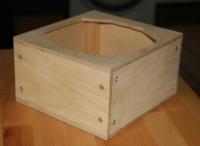
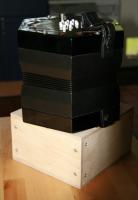
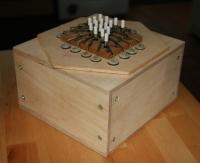
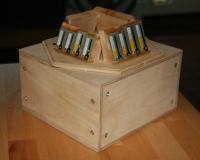
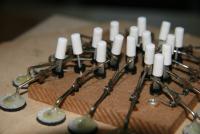
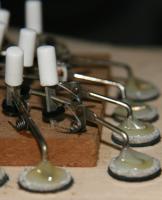
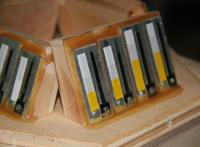
My Options As A Beginer, Advice Needed
in General Concertina Discussion
Posted
Quite a beauty!